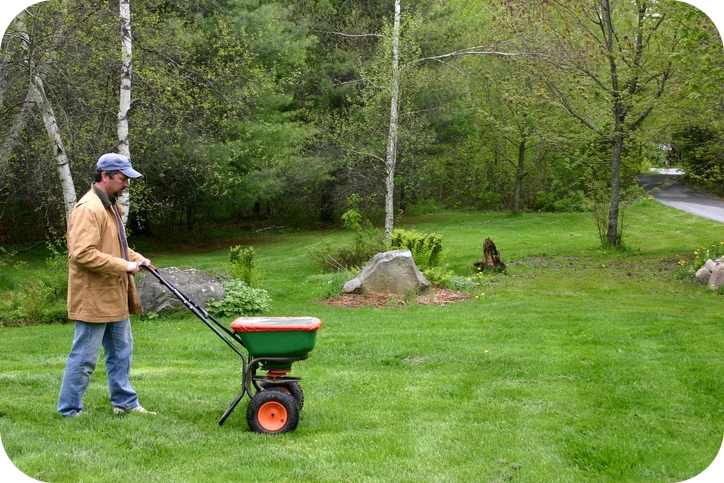Although it’s been a terrific summer here at Lane’s Landscaping Supplies, the first day of autumn (Saturday, September 28) is quickly approaching.
That means less sunlight, shorter days, and colder temperatures.
And before you it, Thanksgiving, Halloween, Christmas, and New Year’s will soon be here.
So if you’ve got the following fall lawn care jobs on your list, now’s the best time to tackle them.

Give your topsoil a bit of extra water
Because summer’s been very hot and dry, you hydrated your topsoil every so often to ensure it doesn’t turn into plain old dirt.
However, you’ll need to give it the extra water it needs to thrive in fall and survive the winter.
Pay close attention to certain areas of your garden, such as:
- Anything you’ve planted in the last three years.
- Fresh and/or new grass.
Now, that doesn’t mean soaking your plants until they’re almost drowning in water. On the contrary, that’s the last thing you should do.
Too much water in the soil can damage plant roots. That, combined with the colder weather, could actually kill your plants.
Just water until the soil is damp. If you notice pools of water starting to form, that’s your cue to turn off the hose.
Put down fresh mulch
One of the spring landscaping jobs you may have taken care was to apply fresh mulch throughout your garden.
Now that fall’s here, you should do it again.
Getting an early start on adding mulch prevents annoying weeds from cropping up throughout your garden and tree beds.
It also helps retain soil moisture. That’s important, because your plants will need it once winter arrives in full force.
Here are some other reasons to mulch in fall:
- If the upcoming winter isn’t too severe, it’s possible to skip your annual application of spring mulch.
- Mulch keeps the fresh topsoil mentioned above in this blog warm and insulated. In turn, that keeps vital microorganisms (worms, microbes) alive and active.
If this is your first time putting down mulch for autumn, make certain to use a landscape calculator.
That way, you won’t end up spreading too much (which can suffocate your plants) or too little (which won’t give them the protect they need).
Fall lawn care for your grass
Come winter, it’ll be impossible to give your grass the TLC it needs.
Therefore, now’s the time to provide the fall lawn care it requires.
Here’s how:
- Aerate: Aeration opens up channels and entry point for rain and water, which is vital to maintain grass health. It also prevents water from ponding, pooling, or flooding your lawn.
- Feed and fertilize: Proper fertilization with strengthen roots so they can handle the harsh winter ahead.
- Composting: Collect any fallen leaves and compost them. You’ll be creating nutrient-rich soil you can apply on your lawn (and flower beds too) to give them extra help over winter.
Get rid of puddles of standing water
It’s easy to ignore standing water. After all, eventually it’ll just freeze and not be an issue, right?
Wrong.
Depending on where the water is located, it could end up damaging your interlocking patio stones by warping or cracking them.
Other areas you should get rid of standing water include:
- Pond and/or water features.
- Climbers and swings.
- Patio furniture.
- Outdoor kitchen.
When you’ve cleaned the water on the ground, grab a ladder, climb up, and remove any standing water from your roof, gutters, and eaves troughs.
Contact Lane’s for all your fall lawn care needs
Taking care of fall lawn care now ensures your landscaping survives the winter and comes back strong in spring.
And whether you need products, advice, or guidance, we can help.
Request a FREE quote on any of our products. Or, contact us anytime with your questions or comments.




